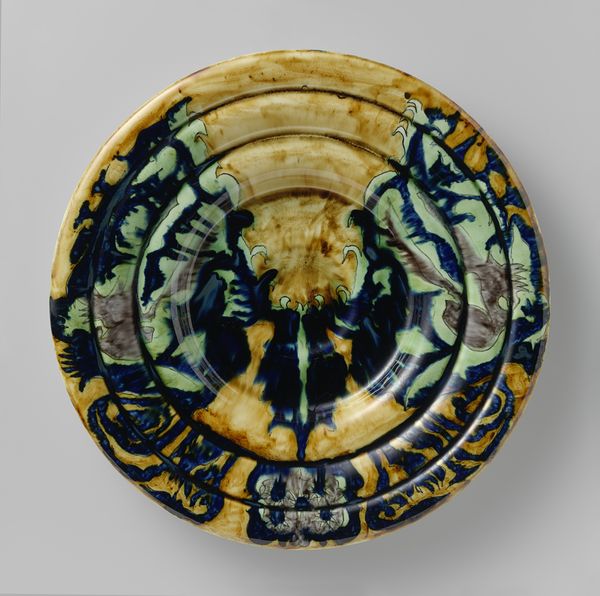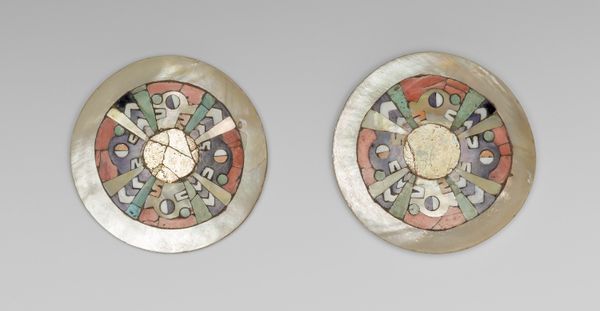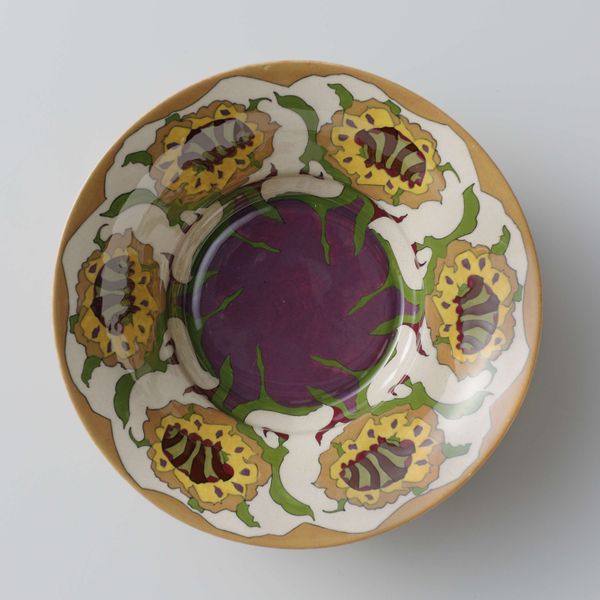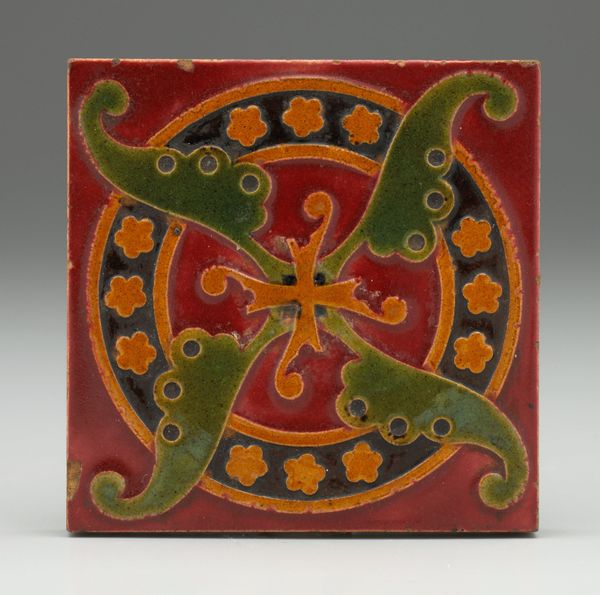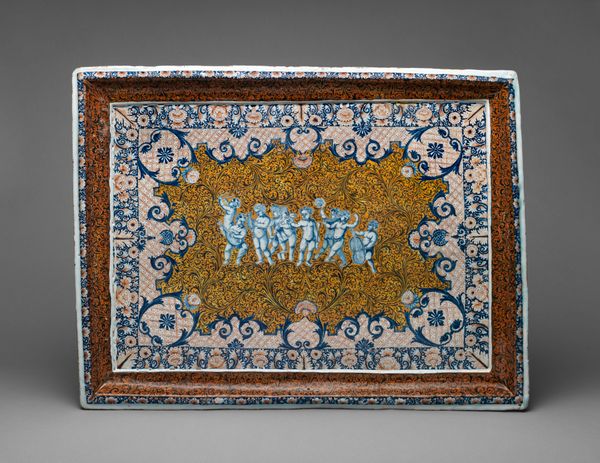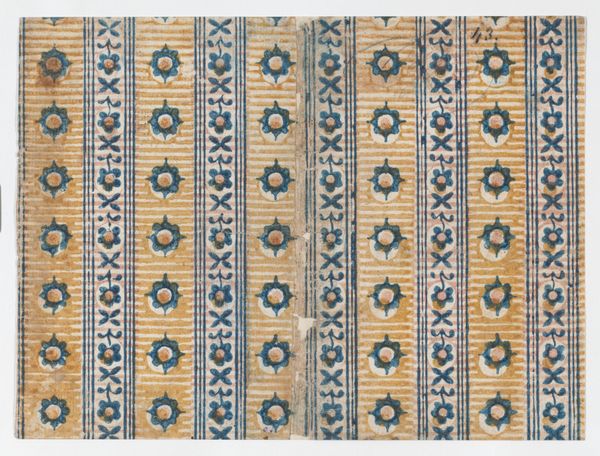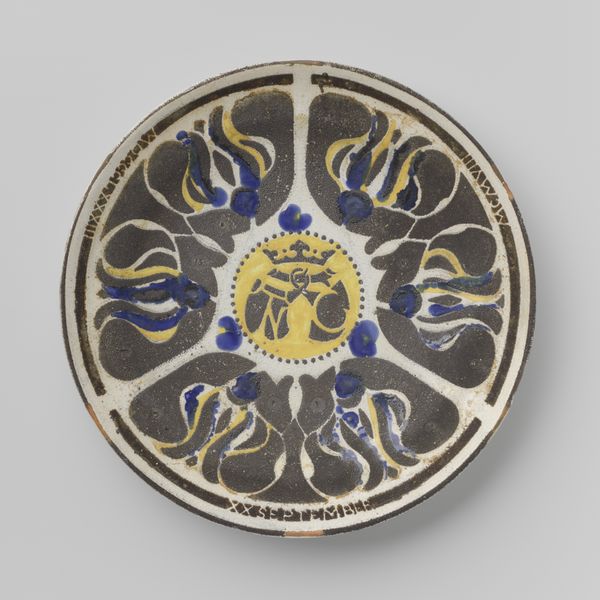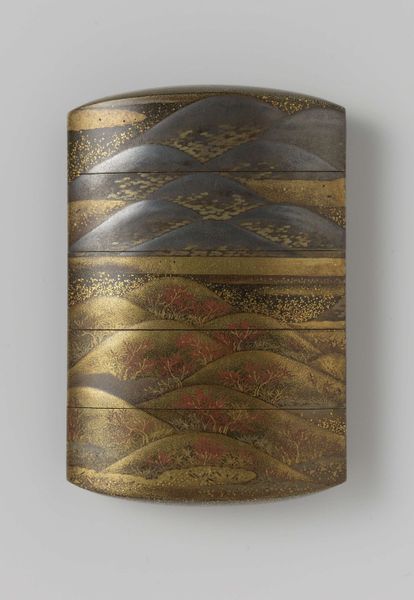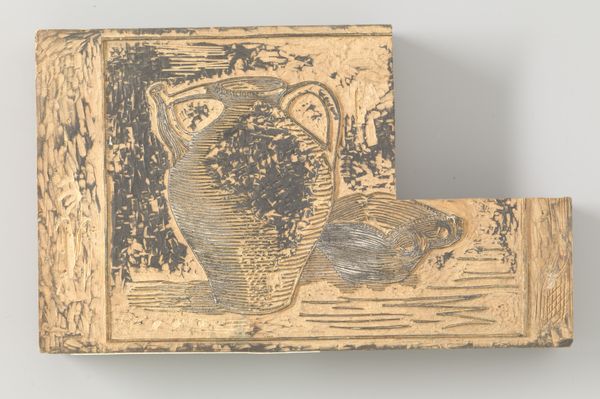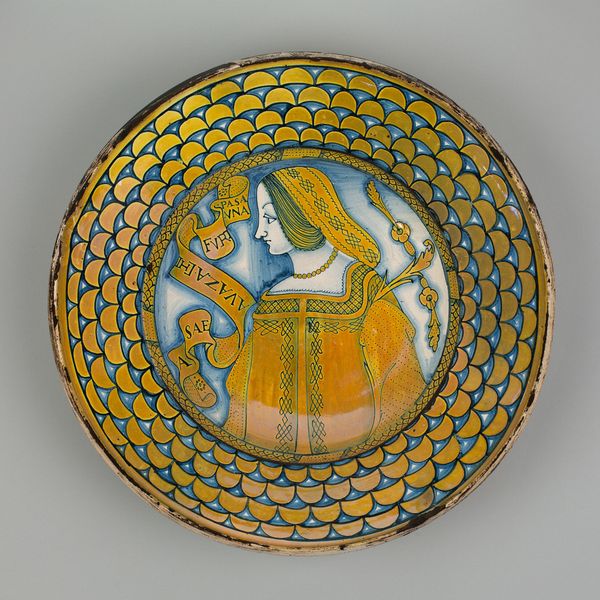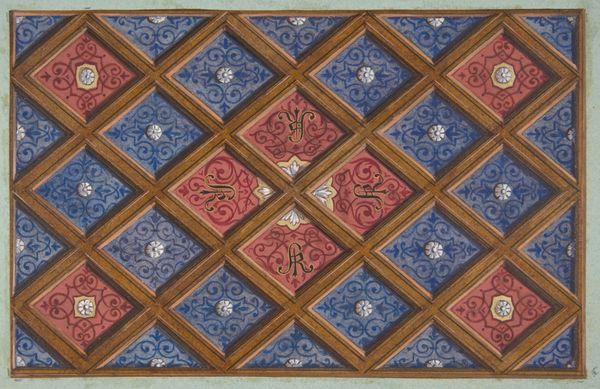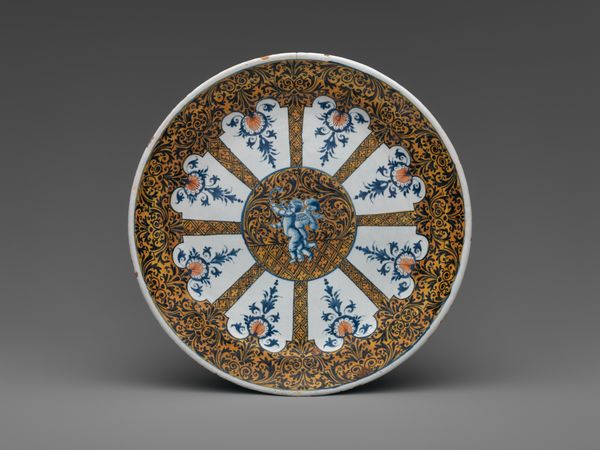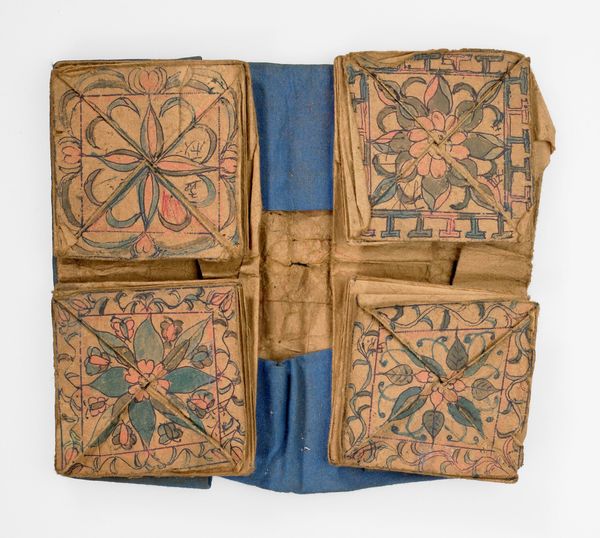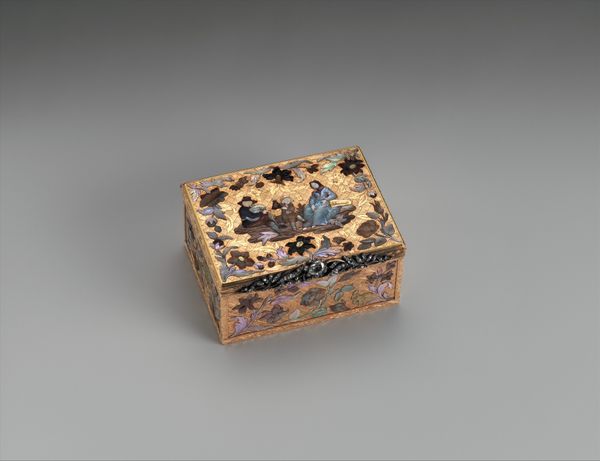
54 Tiles from the chapel of Château de la Bastie d'Urfé, France 1552 - 1565
0:00
0:00
ceramic
#
ceramic
#
11_renaissance
#
decorative-art
#
italian-renaissance
Dimensions: Overall: 25 1/4 × 38 in. (64.1 × 96.5 cm)
Copyright: Public Domain
Editor: Here we have 54 ceramic tiles, made between 1552 and 1565 by Masséot Abaquesne, which were originally part of the chapel of Château de la Bastie d'Urfé in France. Looking at this detail, I'm struck by how utilitarian they seem, and yet, the colours and design are so carefully considered. What do you see in this piece? Curator: I see a fascinating example of how material production intertwines with social context and artistic expression. These aren't merely decorative elements; they're products of specific labor practices and reflect the consumption patterns of the aristocracy. Editor: Can you elaborate on the labor practices? Curator: Certainly. Consider the ceramic itself – the extraction of the clay, the crafting of the tiles, the application of glazes, and the firing process. Each stage involves human labor, likely a collective effort involving skilled artisans. The very materiality of the tile embodies this process. The social aspect becomes evident when one reflects on why such materials, skills, and labor are dedicated to the aristocracy in their chapels. Editor: So you’re saying it’s not just about aesthetics, but also about understanding the power dynamics at play? Curator: Precisely. We can appreciate its decorative qualities but, we shouldn’t divorce it from the material conditions that brought it into existence. How does this impact your understanding? Editor: It pushes me to look beyond just the aesthetic value and think about the people and resources involved in creating something like this. It is almost like each of those strokes has the hand of its craftsman. Curator: Exactly, thinking materially provides a fuller appreciation. Seeing this design of this ornamental ceramic as a symbol, what does this artwork express regarding social context and materials used? Editor: I now better understand how considering the labor and the materiality informs an interpretation that reveals deeper social contexts. Curator: Indeed, an approach rooted in understanding art through production, consumption, and class structure.
Comments
No comments
Be the first to comment and join the conversation on the ultimate creative platform.
